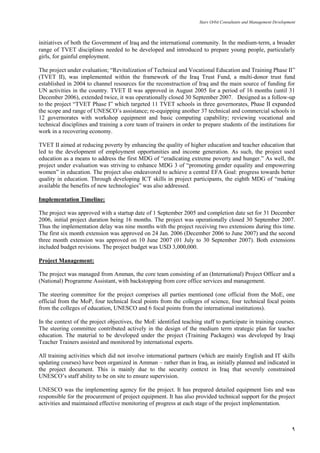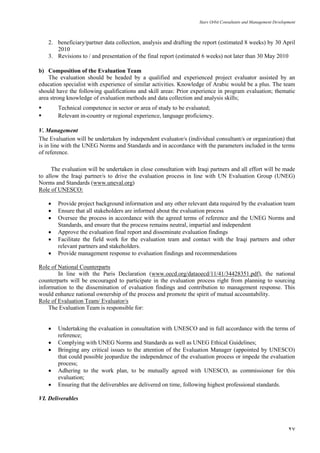This evaluation report summarizes the UNESCO project "Revitalization of Technical and Vocational Education and Training Phase II" in Iraq. The key findings are:
1. The project achieved its objectives of providing equipment, computers, training materials and capacity building for vocational schools. It benefited 37 schools and exceeded enrollment targets.
2. New curricula and trained teachers improved students' learning. Statistical data shows lower dropout rates in beneficiary schools.
3. The number of vocational students rose significantly between 2004-2009, largely due to this project. Partnership between UNESCO and Iraq's Ministry of Education was effective in project design and implementation.
4. While challenges remained around




































































